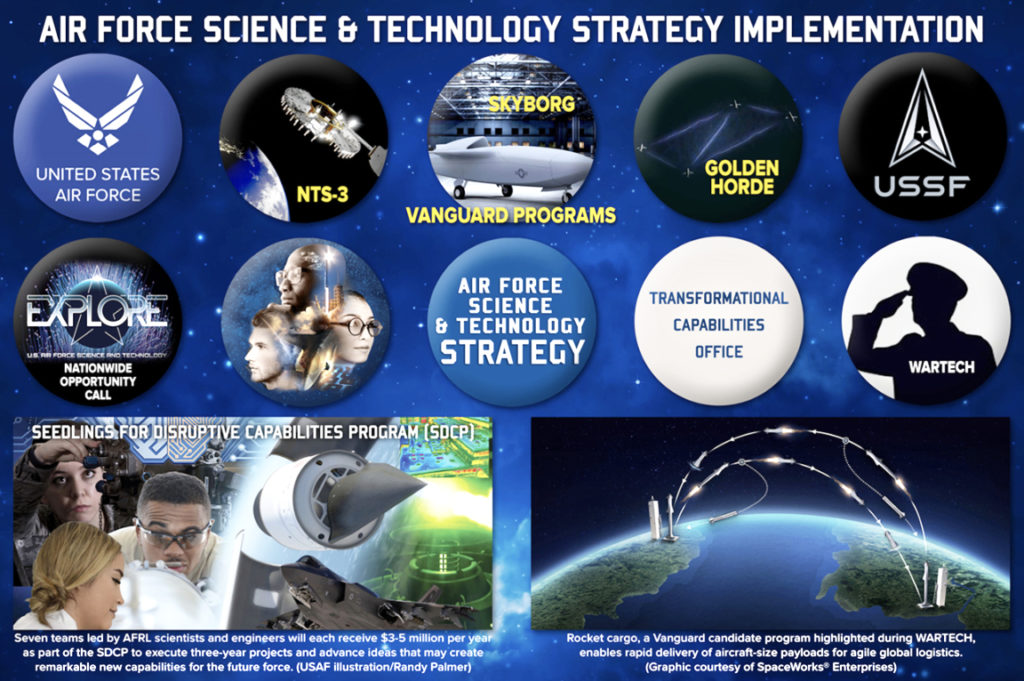
The Department of the Air Force’s Navigation Technology Satellite-3, or NTS-3, Vanguard program has reached another major milestone in preparation for the satellite’s launch in late 2023.

Industry partner L3Harris Technologies, the spacecraft prime contractor, recently delivered the NTS-3 space vehicle to an Air Force Research Laboratory (AFRL), integration and test facility at Kirtland Air Force Base, New Mexico.

The satellite integrates an agile positioning, navigation and timing, or PNT, payload to the Northrop Grumman ESPAStar bus, to provide a space platform for AFRL and partner organization experiments and integrated capability demonstrations.

In 2019, the U.S. Department of the Air Force designated NTS-3 as one of the first three Vanguard programs to deliver innovative, game-changing capabilities to the warfighter at an accelerated pace. NTS-3, which is managed by the AFRL Transformational Capabilities Office and has program partners in both the U.S. Space Force and U.S. Air Force, will push the boundary of PNT technology to pave the way for a more flexible, robust and resilient architecture for satellite navigation.

AFRL and L3Harris are now completing the remaining intra-payload and payload-to-bus functional and performance tests, including the first radio frequency broadcast tests of the novel PNT signals that will be demonstrated from near-geosynchronous orbit after the NTS-3 launch.
The Global Navigation Satellite System Test Architecture, or GNSSTA, developed by the MITRE Corporation in partnership with the AFRL Sensors Directorate, is crucial for meeting end-to-end, NTS-3 mission objectives.
GNSSTA is a reprogrammable, software-defined receiver that allows users to receive legacy GPS and advanced signals generated by NTS-3 and lays the groundwork for future operational receivers to provide the Space Force with options to prevent and respond quickly to common threats on the battlefield, such as GPS jamming and spoofing.
NTS-3 is the first U.S. experiment of its kind in nearly 50 years, since the Navy Research Laboratory’s NTS-1 and NTS-2 spacecraft led the way for the Global Positioning System, or GPS, constellation in the 1970s.
“This major milestone marks the transition from space system development at contractor’s facilities to the final stage of integration and test activities,” said Arlen Biersgreen, program manager, Navigation Technology Satellite-3. “The AFRL team will be overseeing and working closely with L3Harris and other key industry partners to apply an effective combination of contractor and government resources to successfully complete this phase of the effort. This Vanguard not only aims to support GPS users through vital development of new technologies and techniques, but also to show how an agile and responsive U.S. satellite navigation architecture is paramount to defeating the most challenging threats to warfighter success, both today and through the coming decades.
Biersgreen said following those activities, the team will perform standard space environment tests that simulate the launch and space environments to verify the system is ready for the rigors of experimental operations in space. He added that experimental performance data from ground testing will be available for sharing with program partners during the next several months.
Dr. Joanna Hinks, the NTS-3 principal investigator, has worked closely with the Sensors team on the GNSSTA development and testing. “The entire team is excited that earlier this month, we successfully generated signals on the actual spacecraft and received them with our experimental GNSSTA user equipment,” Hinks said. “Showing the space segment and user segment working together like that is an important step to being ready to conduct experiments on-orbit.”
The Air Force Research Laboratory, or AFRL, is the primary scientific research and development center for the Department of the Air Force. AFRL plays an integral role in leading the discovery, development and integration of affordable warfighting technologies for our air, space and cyberspace force. With a workforce of more than 11,500 across nine technology areas and 40 other operations across the globe, AFRL provides a diverse portfolio of science and technology ranging from fundamental to advanced research and technology development.
